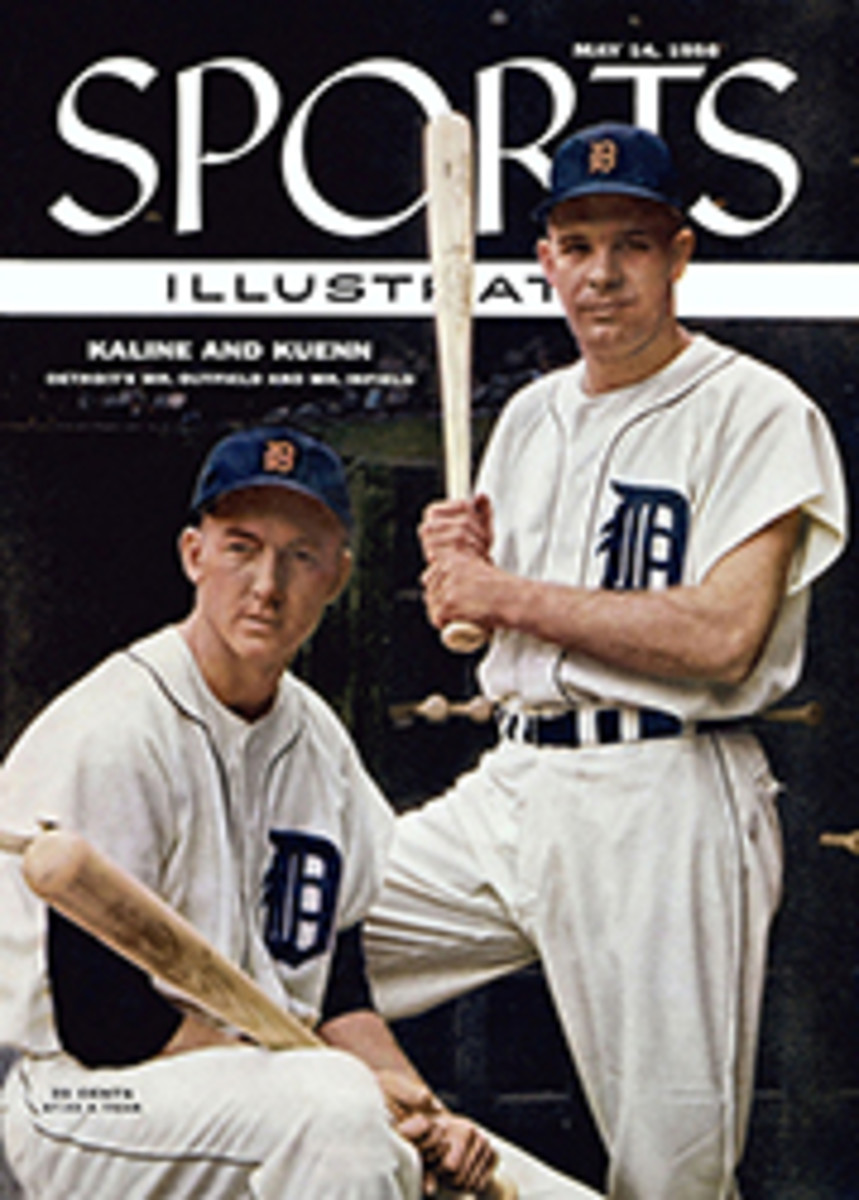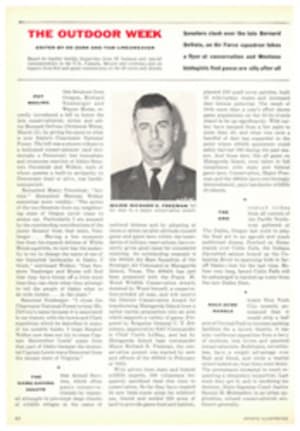
MERIT MAKES A STAR
Color, that elusive intangible that marks the difference between a great champion and a mere titleholder, need not be inborn. It may rub onto an athlete who, by sheer weight of expert performance, captures the public imagination. In such cases recognition takes longer, but the greatness is none the less real; the dye of achievement is as vivid and lasting as the pigment of showmanship. That is why this week, as the nation's foremost bowlers gather for the finals of the American Bowling Congress Masters Invitational tournament May 13-16 at Rochester, N.Y., the popular favorite is a handsome young man who, until the past month or so, was noted more for his modesty than his merit.
It took seven years for color to rub onto William Terrence Lillard, 28-year-old star of the Falstaffs of Chicago. He had surprised the experts when, an unknown from Texas, he finished 11th in the All-Star Championships in 1949. During the next five years his All-Star record was superb—second twice and never worse than fifth. His average for the six years, during which he rolled 600 games, was 206-plus, highest of all the champions, past and present.
But even after he scored a tremendous last-frame victory over Joe Wilman to win the U.S. individual match-game title last December, Lillard's star failed to shine as brilliantly as it might have. He was not as effervescent as Steve Nagy or as suave as Buddy Bomar; he lacked the showmanship of Andy Varipapa and the poise of Ned Day. Lillard was considered a more-than-adequate champion, but not a great one. He remained in this niche for seven years: a fine bowler who, like 100 others, had a chance to win any tournament he entered.
That picture changed early last month when the Falstaffs made their annual pilgrimage to the ABC at Rochester, the largest participation event in the world of sports. (This year there were 31,000 contestants.) Lillard led the team into first place with a score of 3,092; he and Stan Gifford took the lead in doubles with 1,331, and Lillard vaulted into first place in the all-events (total for nine games) with 2,018, or better than a 224 average. As of last week, these scores were still on top, and only three or four of the country's better bowlers had yet to roll.
If, as expected, the standings remain unchanged through the night of May 20, Lillard will have become the first man in history to win three ABC titles in the same year, the first to take the All-Star and an ABC individual event in the same year and he will join Wilman, Fred Bujack of Detroit and the late John Koster as the only men ever to win four ABC championships (Lillard was a member of the Pfeiffers when they won the team event last year). To give you a further idea of the magnitude of his achievement, 4,800,000 games have been rolled in 53 years of ABC competition and seldom have even two titles been won in a nine-game series.
The 40 lanes set up in Rochester's Community War Memorial specially for the ABC, incidentally, were the toughest in years, with the result that scores generally were low. The Lillard-Gifford doubles total, for example, would not have won in any ABC since 1934; the Falstaffs' score has been bettered seven times in the past 19 years; Lillard's 2,018 is the eighth highest in all events. It is axiomatic that when alleys "won't run," as they say, for right-handers, they are easier for lefties. And Southpaw George Wade, 33-year-old bowling establishment manager from Steubenville, Ohio, found them to his liking. Wade came through with a lusty 744 to take the singles lead. From all accounts he got tough breaks, too, leaving seven No. 7 pins—the equivalent of 10-pin 'taps" for a right-hander—which broke up strings of strikes. Had any two of them fallen, he would have had 42 more pins and smashed the 775 record set by Lee Jouglard of Detroit in 1951.
Since most of the remaining teams scheduled to bowl in the ABC are under-average—875—boosters, the spotlight at Rochester is turning on the Masters, the third leg of bowling's Triple Crown (the All-Star and ABC all-events being the other prestige contests). Thirty-two stars, including Lillard, are seeded into the finals, and 240 other bowlers will roll an eight-game qualifying round to determine the remaining 32 finalists. The 64 will start head-and-head competition on May 13, with total pins for four games deciding each match. One loss puts a man into the losers' bracket. A second loss eliminates him. The field narrows down more and more until, on the final night, only two are left.
Among the favorites are the ever-dangerous Nagy, 1955 U.S. champion; Buzz Fazio, winner of the 1955 Masters; Don Carter, twice national title-holder; and Gifford, the youngster who came out of Portland, Ore. last summer and won $8,600, including $5,000 for bowling a perfect 300, on a television show broadcast by at least 135 stations. And, of course, Lillard, who has shown he can hit the ABC alleys on which the Masters also will be contested. Since no one has ever won two legs of the Triple Crown, it might seem fantastic to suggest Lillard could take all three. But this much is certain: the crowd will be behind him, for he has suddenly become the most colorful figure in the game.
PHOTO
THE RELIABLE ROLL which has made William Terrence Lillard a record breaker produced spectacular score on tough lanes.

